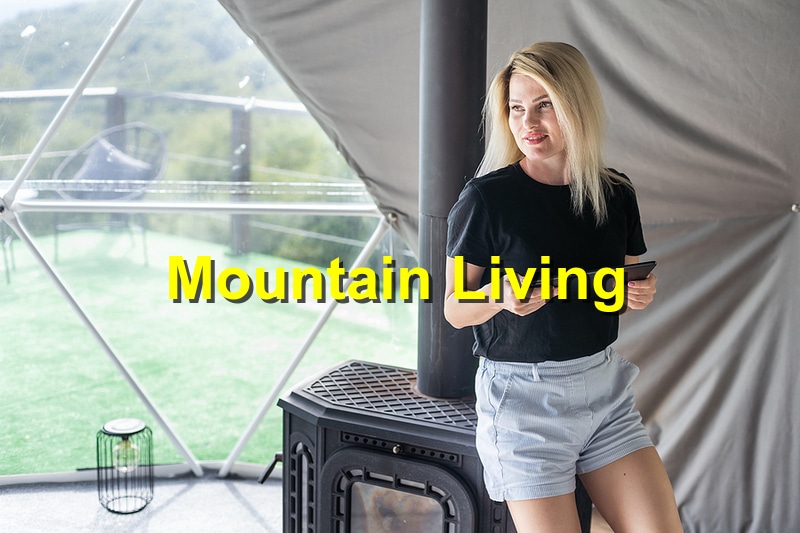Living in the mountains offers a unique and breathtaking experience, with majestic vistas, fresh air, and a close connection to nature. When designing or choosing a home in a mountainous region, certain features can enhance the mountain living experience. In this article, we will explore the top home features that complement mountain living, providing comfort, convenience, and a seamless integration with the surrounding natural beauty.
- Expansive Windows and Outdoor Living Spaces: Capitalizing on the stunning mountain views, homes in mountainous regions should feature large windows that frame the picturesque landscapes. These expansive windows not only bring in abundant natural light but also offer panoramic views of the mountains, forests, and valleys. Additionally, incorporating outdoor living spaces such as decks, patios, or balconies allows residents to immerse themselves in the beauty of the surrounding environment.
- Energy Efficiency and Sustainable Design: Mountain living often involves exposure to various weather conditions, including temperature fluctuations. Energy-efficient homes with proper insulation, efficient heating and cooling systems, and energy-saving appliances are essential for comfort and cost-effectiveness. Sustainable design features, such as solar panels, rainwater harvesting, and efficient water fixtures, further reduce the environmental impact and align with the eco-conscious lifestyle embraced in mountain communities.
- Natural Materials and Rustic Aesthetics: Embracing the charm of mountain living often involves incorporating natural materials and rustic aesthetics into home design. Utilizing materials like stone, wood, and natural fibers for flooring, walls, and architectural elements creates a warm and inviting atmosphere that harmonizes with the surrounding landscape. Exposed beams, vaulted ceilings, and cozy fireplaces add a touch of rustic elegance, blending the indoors with the natural outdoors.
- Ample Storage for Outdoor Gear: Living in the mountains often means engaging in outdoor activities such as hiking, skiing, and biking. Adequate storage space for sporting equipment, outdoor gear, and seasonal items is crucial. Incorporating dedicated mudrooms, equipment rooms, or garage storage systems allows residents to keep their gear organized, accessible, and protected from the elements.
- Fire-resistant Features and Safety Measures: Mountain regions can be prone to wildfires, making fire-resistant features and safety measures essential in home design. This includes fire-resistant roofing materials, proper clearance around the property, and the installation of fire-resistant windows and doors. Additionally, incorporating smoke detectors, fire extinguishers, and an evacuation plan ensures the safety of residents and their homes.
- Access to Community Amenities: Mountain living often comes with the advantage of community amenities that cater to the unique needs and interests of residents. These can include hiking trails, parks, recreational facilities, and community gathering spaces. Access to these amenities encourages an active lifestyle and fosters a sense of community among mountain residents.
Conclusion
When embracing mountain living, certain home features enhance the experience and connection with nature. Expansive windows, outdoor living spaces, energy efficiency, rustic aesthetics, ample storage for outdoor gear, fire-resistant features, and access to community amenities all contribute to the enjoyment and comfort of mountain living. By incorporating these features, homeowners can fully immerse themselves in the beauty and tranquility of their mountainous surroundings while creating a harmonious living environment.
References: HGTV, MountainLiving




